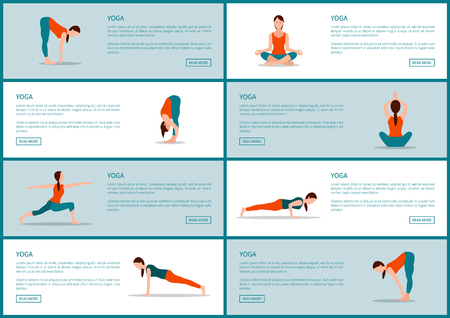Introduction to Back Pain in the United States
Back pain is one of the most common health issues affecting Americans today. In fact, studies show that about 80% of adults in the United States will experience back pain at some point in their lives. This condition doesn’t just cause discomfort—it can also impact daily activities, work productivity, and overall quality of life. With so many people struggling to find relief, understanding why back pain happens and how it affects different parts of life is important for making informed choices about care and prevention.
How Widespread Is Back Pain?
Back pain affects people of all ages, but it is especially common among adults aged 30 to 60. It’s a leading reason for doctor visits and missed workdays, costing billions in healthcare expenses each year. The table below highlights some key facts about back pain in the U.S.:
| Aspect | Details |
|---|---|
| Prevalence | Up to 80% of Americans experience back pain during their lifetime |
| Main Age Group Affected | Adults between 30 and 60 years old |
| Impact on Work | Second leading cause of missed workdays |
| Healthcare Costs | Estimated $50 billion spent annually on back pain treatment |
Common Causes of Back Pain
The reasons behind back pain can vary widely from person to person. Some of the most common causes include:
- Poor posture from long hours sitting at desks or using electronic devices
- Lifting heavy objects incorrectly or sudden awkward movements
- Muscle strain or ligament sprain from physical activity or accidents
- Chronic conditions like arthritis, herniated discs, or osteoporosis
- Lack of regular physical activity leading to weak core muscles
The Need for a Holistic Approach
Because back pain can stem from both physical and lifestyle factors, managing it often requires more than just medication or surgery. Many Americans are now looking for holistic approaches—methods that consider the whole person, including body, mind, and daily habits. Yoga and Pilates have become popular options because they not only address physical symptoms but also promote flexibility, strength, relaxation, and better posture.
Foundations of Yoga and Pilates
Yoga and Pilates are two popular practices that have become staples in many American fitness and wellness routines, especially for people seeking relief from back pain. Both disciplines emphasize body awareness, flexibility, and core strength, but their origins and principles are quite distinct.
Origins and Core Principles
| Practice | Origin | Core Principles |
|---|---|---|
| Yoga | Ancient India (over 5,000 years ago) | Focuses on breath control, mindfulness, physical postures (asanas), and meditation to promote harmony between mind and body. |
| Pilates | Early 20th Century Germany/USA | Developed by Joseph Pilates, emphasizes controlled movements, core stabilization, alignment, and muscle balance. |
Integration into American Wellness Culture
In the United States, yoga and Pilates have been adapted beyond their traditional roots to meet the needs of a diverse population. Americans often practice yoga in group classes at gyms or studios, focusing on relaxation, flexibility, or even athletic performance. Similarly, Pilates has evolved with mat-based classes and equipment-based sessions like Reformer Pilates, widely available at fitness centers.
Why Are They So Popular for Back Pain?
- User-Friendly: Both can be modified for beginners or people with mobility issues.
- Mental Health Benefits: Many Americans appreciate the stress-relieving aspects alongside physical improvements.
- Easily Accessible: Classes are available in-person and online across the country.
- Evidence-Based: Increasing research supports their role in managing back pain through improved posture, core strength, and flexibility.
Pilates vs. Yoga: A Quick Comparison for Back Pain Management
| Pilates | Yoga | |
|---|---|---|
| Main Focus | Core strength and stability; spinal alignment | Flexibility; mind-body connection; full-body stretches |
| Common Styles Used for Back Pain | Mat Pilates; Reformer Pilates | Hatha Yoga; Restorative Yoga; Iyengar Yoga (focus on alignment) |
| Adaptation in America | Pilates studios and group fitness classes; often integrated into physical therapy programs | Mainstream yoga studios; yoga incorporated into corporate wellness and community centers |
The foundations of both yoga and Pilates make them accessible tools for Americans looking to manage or recover from back pain while enjoying additional benefits like stress reduction and increased overall well-being.
![]()
3. Therapeutic Benefits for Back Pain
Scientific Evidence Supporting Yoga and Pilates
Both Yoga and Pilates have become popular options for people seeking relief from back pain. Research in the United States has shown that these practices can be effective in reducing both chronic and acute back pain. Several clinical studies published by the National Institutes of Health (NIH) highlight that individuals who regularly practice Yoga or Pilates report reduced pain levels, improved flexibility, and enhanced quality of life.
How Yoga and Pilates Help with Back Pain
The main therapeutic benefits of Yoga and Pilates for back pain revolve around three key areas: flexibility, core strength, and posture. Here’s how each plays a role:
| Benefit | Yoga | Pilates |
|---|---|---|
| Flexibility | Gentle stretches increase range of motion in the spine and hips, easing muscle tightness. | Controlled movements lengthen muscles, especially in the lower back and hamstrings. |
| Core Strength | Poses like Plank and Boat engage deep abdominal muscles to support the spine. | Pilates focuses on building strength in the “powerhouse” — abs, lower back, hips, and glutes — to stabilize the back. |
| Posture | Mindful alignment in poses trains better everyday posture habits. | Exercises teach awareness of spinal alignment, reducing slouching and strain. |
Flexibility Improvements
Lack of flexibility often leads to stiffness and pain in the back. Both Yoga and Pilates incorporate stretching techniques that loosen tight muscles in the spine, hips, and legs. This reduces pressure on the lower back and allows for easier movement during daily activities.
Building Core Strength for Stability
A strong core is essential for supporting your spine. Many exercises in Yoga (like Bridge or Warrior poses) and Pilates (like The Hundred or Pelvic Curl) specifically target abdominal and back muscles. This added strength helps protect against future injuries and supports long-term rehabilitation.
Improving Posture for Lasting Relief
Poor posture is a common cause of recurring back pain. Both Yoga and Pilates emphasize body awareness, teaching you how to maintain good alignment whether you’re sitting at a desk or standing. Over time, this reduces unnecessary strain on your back muscles.
Key Takeaways from Research Studies
- Regular participation in Yoga or Pilates classes (at least 1-2 times per week) significantly lowers reported pain scores among those with chronic low back pain.
- Improvements in core strength and flexibility help speed up recovery from minor injuries.
- Practicing these methods at home with guidance from certified instructors is both safe and effective when tailored to individual needs.
4. Implementing Yoga and Pilates in Rehabilitation
Guidelines for Integrating Yoga and Pilates into Back Pain Rehabilitation
Incorporating Yoga and Pilates into back pain management can be a game changer, but it’s important to do so safely and effectively. Here are some easy-to-follow guidelines for adding these practices to your rehab routine:
- Consult with a Physical Therapist: Before starting Yoga or Pilates, speak with your physical therapist. They can help identify which movements are safe and adjust the routines based on your condition.
- Start Slow: Begin with basic poses or exercises, focusing on gentle movement and good form rather than intensity or duration.
- Tailor the Routine: Not all exercises suit every individual. Modify poses and exercises to fit your level of pain, flexibility, and strength.
- Focus on Core Stability: Both Yoga and Pilates emphasize core strength, which is essential for supporting the spine and reducing back pain.
- Monitor Progress: Keep track of how you feel during and after sessions. Share this feedback with your rehab team to make any necessary adjustments.
Collaborating with Physical Therapists
Working together with your physical therapist is crucial when adding Yoga or Pilates to your rehabilitation plan. Therapists can:
- Assess your specific needs and limitations
- Demonstrate proper technique to prevent further injury
- Create a personalized program that blends therapeutic exercises with Yoga or Pilates movements
- Help you progress safely as your strength and flexibility improve
Tailoring Routines for Different Needs
No two people have the same back pain experience. Here’s how Yoga and Pilates routines can be adapted for different levels of pain and mobility:
| Pain Level / Limitation | Recommended Approach | Sample Exercises/Poses |
|---|---|---|
| Mild Pain, Good Mobility | Full beginner class, slow progression, focus on core and flexibility | Cobra pose (Yoga), Pelvic tilts (Pilates) |
| Moderate Pain, Some Mobility Limits | Select gentle movements; avoid deep bends or twists; use props like cushions or blocks | Cat-Cow stretch (Yoga), Knee folds (Pilates) |
| Severe Pain, Limited Mobility | Mainly breathing exercises, guided relaxation, minimal movement under supervision | Savasana with mindful breathing (Yoga), Gentle diaphragmatic breathing (Pilates) |
Tips for Safe Practice at Home
- Create a comfortable space free from distractions.
- Use mats and props for support.
- If something hurts, stop immediately and consult your therapist.
- Aim for consistency—short sessions several times a week are better than long ones less often.
Remember: Personalization Is Key!
The most effective back pain rehabilitation programs are those that adapt to your unique situation. With guidance from healthcare professionals and careful selection of Yoga and Pilates techniques, you can build a routine that supports healing and helps you get back to doing what you love.
5. Practical Considerations and Safety Tips
Starting Yoga and Pilates Safely with Back Pain
If you have chronic back pain and want to try yoga or Pilates, it’s important to start safely. Both practices can be helpful for back pain management, but they need to be approached with care to avoid injury. Here are some practical tips to help you get started:
- Consult Your Healthcare Provider: Before beginning any new exercise routine, talk to your doctor or physical therapist, especially if you have a history of serious back issues.
- Start Slow: Begin with beginner-level classes or private sessions. Avoid advanced poses or movements that put stress on your lower back.
- Listen to Your Body: If a movement causes pain (not just discomfort), stop immediately. Gentle stretching should never hurt.
Instructor Qualifications in the U.S.
Choosing the right instructor is key for a safe and effective experience. In the United States, yoga and Pilates instructors may have varying levels of training. Here’s a quick guide to common qualifications:
| Practice | Common Certification | Typical Training Hours |
|---|---|---|
| Yoga | RYT 200/RYT 500 (Registered Yoga Teacher) | 200-500 hours |
| Pilates | PMA-CPT (Pilates Method Alliance Certified Pilates Teacher) | 450+ hours |
- Ask About Experience: Look for instructors who have experience working with people who have back pain or injuries.
- Check Credentials: Most reputable instructors will display their certifications on their website or studio wall.
Class Settings in the U.S.
You’ll find many options for practicing yoga and Pilates across the United States. Each setting has its benefits:
| Setting | Description | Best For |
|---|---|---|
| Private Sessions | One-on-one instruction tailored to your needs | People with chronic pain or specific limitations |
| Group Classes (Beginner Level) | Larger classes, often at gyms or studios; less individualized attention | Mild back discomfort, no severe limitations |
| Physical Therapy Clinics | Pilates/yoga led by licensed therapists, often covered by insurance with a referral | Medical conditions requiring close supervision |
Tips for Choosing a Class Setting:
- If you’re new or have significant pain, start with private sessions or small group classes where the instructor can give more personal attention.
- Avoid crowded gym classes until you feel confident about modifications and proper form.
- If possible, choose studios that offer “gentle,” “restorative,” or “therapeutic” classes designed for people with physical challenges.
Modifications for Chronic Back Pain
The right modifications make yoga and Pilates accessible and safe for those with chronic back pain. Always let your instructor know about your condition before class so they can suggest adjustments. Here are some common modifications:
| Movement/Exercise | Suggested Modification |
|---|---|
| Cobra Pose (Yoga) | Bend elbows and lift only chest slightly off floor instead of full extension; keep pelvis grounded. |
| Pilates Roll-Up | Bend knees or use a rolled towel under knees; limit range of motion as needed. |
| Twist Poses (Yoga & Pilates) | Avoid deep twists; focus on gentle rotations within comfortable range. |
| Bending Forward (All) | Bend knees slightly when folding forward to reduce strain on lower back. |
| Lying Down Exercises (All) | Add a pillow under knees while lying on your back for added support. |
Sensible Self-Care Tips:
- Pace yourself—progress takes time, especially when managing chronic pain.
- If you feel increased pain during or after practice, stop and consult your healthcare provider before continuing.
- Stay hydrated and wear comfortable clothing that allows free movement.
- Mats and props (blocks, straps, bolsters) can help make poses safer and more comfortable—don’t hesitate to use them!


